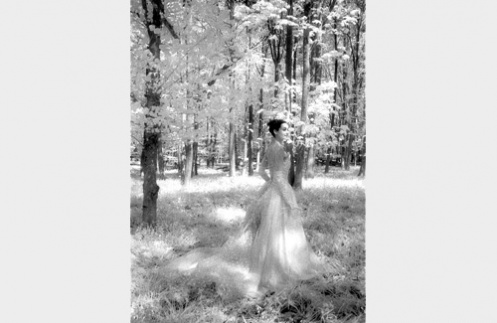
Image 1 - This image is deceptively simple, and those of people often are. It was taken in a bluebell wood, in Suffolk, principally because conventional colour images were also required. Seasonal timing therefore had to be precise, and the co-operation of the local gamekeeper obtained. A suitable model wearing a long wedding dress, with a train, was also needed. The person in the photograph is a semi-professional model with whom I had done quite a bit of other work, but she did not have a wedding dress of her own. Eventually a generous-spirited wedding outfitter in Norfolk agreed to lend us, in return for a couple of large prints, the beautiful and very expensive dress seen in the image.
The model changed into the dress at my home and, to the amusement of various onlookers, travelled with me by car to the bluebell wood. Having previously found a suitable location within the wood, it should have been a straightforward walk to the chosen spot. However, I had not understood the difficulties the model would encounter as a consequence of being dressed as a bride. The train of the wedding dress seemed to catch on every leaf and piece of debris, and we prayed that we would not meet anyone to whom we would feel obliged to offer an explanation for our unconventional activities. Nevertheless, we completed the half-mile walk through the wood to the location, where it was relatively simple to set up the equipment.
The camera had been loaded with Kodak High Speed Infrared film before leaving home. It was set up on a tripod, the shot was composed, and the focus was set manually to the appropriate infrared mark on the 85mm lens. Finally, an IR72 opaque filter was attached to the lens. Exposure was bracketed by plus and minus two stops, in increments of one-third of a stop, to ensure that an ideal exposure was obtained. I did not want to repeat the whole project because of a simple error.







